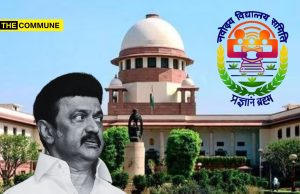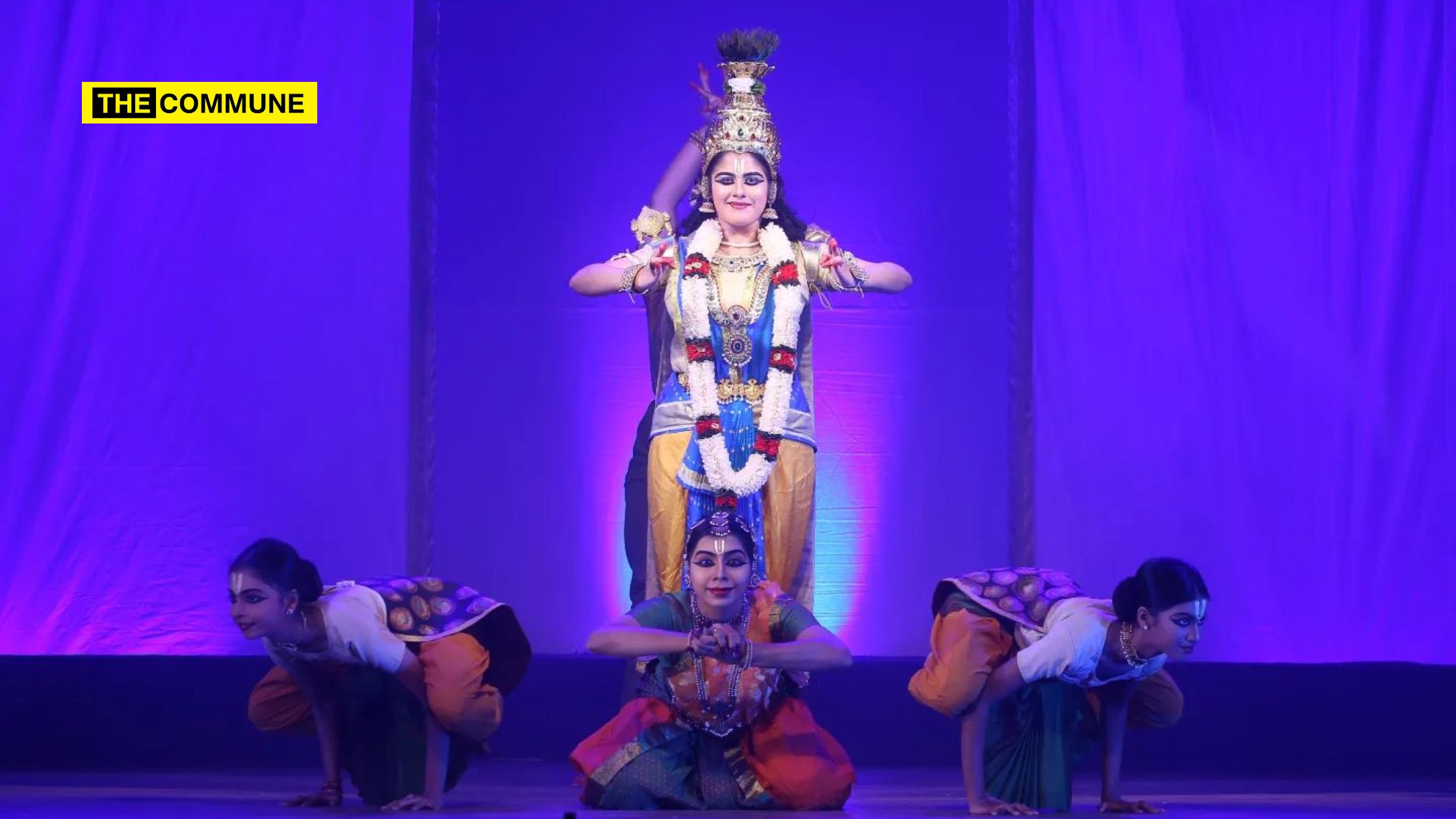
Image Credit - Anitha Guha Bharathanjali
In her bustling household, my maternal grandmother frequently recited a cherished verse as a part of her daily routine. With her every step, she carried a melody that resonated through the kitchen, a hymn that invoked the very essence of Krishna himself.
“Agre Pashyami,” she would intone, her voice carrying a devotion that spanned centuries. These verses from the 100th dasakam (chapter) of the revered Narayaneeyam, composed by the illustrious Melpathur Narayana Bhattathiri in the 16th century, were more than just words. They were a portal to a realm where love and surrender to the divine intertwined in poetic grace.
Narayaneeyam, a tapestry woven from the threads of devotion, weaves together the life and exploits of Lord Krishna, drawing from the sacred Bhagavata Purana. Composed in pursuit of divine healing, this masterpiece stands as a testament to the miraculous power of faith. In its 100th dasakam, an ailing Bhattathiri was blessed with a vision, and in verse, he painted the very form of Krishna he beheld.
अग्रे पश्यामि तेजो निबिडतरकलायावलीलोभनीयं
पीयूषाप्लावितोऽहं तदनु तदुदरे दिव्यकैशोरवेषम् ।
तारुण्यारम्भरम्यं परमसुखरसास्वादरोमाञ्चिताङ्गै-
रावीतं नारदाद्यैर्विलसदुपनिषत्सुन्दरीमण्डलैश्च ॥१॥
agre pashyaami tejO nibiDatara kalaayaavalii lObhaniiyaM
piiyuuShaaplaavitO(a)haM tadanu tadudare divyakaishOraveSham |
taaruNyaarambharamyaM paramasukha rasaasvaada rOmaa~nchitaangaiH
aaviitaM naaradaadyairvilasadupaniShat sundarii maNDalaishcha ||
Translates to:
Oh, GuruvAyurappA! I see in your sannidhi a bright blue thEjas(effulgence) having the hue of KaasAmpoo (KalAya Flower) pushpa cluster. I am now immersed in that deep nectarine experience. Next, I see in the middle of that blue effulgence, a beautiful child at the beginning of youth and surrounded by admirers like Sage NaaradhA with joyous horripilation and the various Upanishads in the form of lovely ladies singing Your praise.
Fast forward to an October evening in Chennai, where the spirit of Narayaneeyam came alive in a mesmerizing spectacle aptly titled “Agre Pashyami.” Conceptualised meticulously by the eloquent Upanyasaka Dushyanth Sridhar and the renowned Bharatnatyam exponent Anita Guha, this production is truly a dedication to Lord Guruvayurappan.
The distinguished guests of honour for the evening included Smt. Sheela Balaji is associated with Swami Dayananda Saraswati’s “AIM For Seva,” a noble initiative founded in 2000 to bring education and healthcare within reach of children in rural areas of India. Also in attendance was Shri Srinivasan from the Vikatan Group. During the event, the compere/emcee shared with the audience the diverse philanthropic endeavours undertaken by the Desika Daya Trust. Their initiatives spanned across the country, from supporting patashalas to restoring and preserving temples in and around Tamil Nadu.
The stage was set for an evening of transcendence as the curtains went up at Narada Gana Sabha; the air thrummed with anticipation. The performance unfolded like a divine tapestry, Dushyanth’s narration guiding us through the celestial odyssey.
The performance commenced with a Seeveli ritual, and we were granted the divine darshan of Lord Guruvayurappa. In a remarkable portrayal, a young girl embodied the deity, standing perfectly still, radiating a continuous and serene smile reminiscent of the Lord’s presence at His Abode in Guruvayur.
Each act, a brushstroke of devotion, revealed the avatars of Lord Mahavishnu. The gasp that escaped the audience as Koormavataram graced the stage bore witness to the spell woven by the artists on stage.

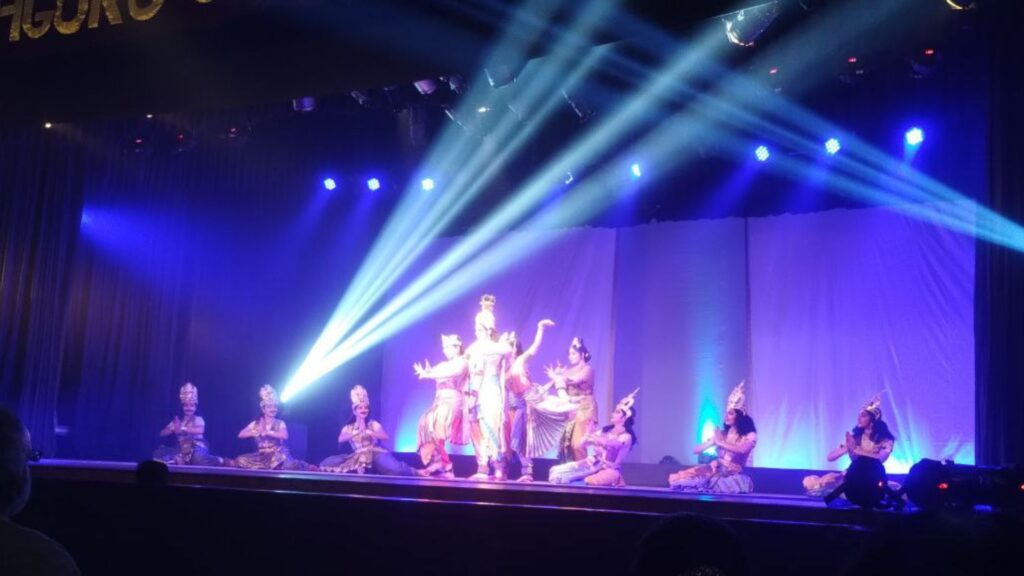
Next in line were the captivating scenes depicting Lord Shiva consuming the Halahala poison, followed by the grandeur of the Varaha avatar, where Bhagawan valiantly protected and rescued Bhoomadevi.
Then came the awe-inspiring enactment of the Narasimhavataram, a performance that completely enthralled the audience in the auditorium. as He tore into Hiranyakasipu. The stunning visual effects further elevated the mesmerising dance sequence, leaving the spectators spellbound.
![]()
Ramavatharam followed with the “capture” of Lord Hanuman, a beacon of brilliance. The music, a symphony of emotions, echoed through the auditorium, and hearts danced evoking the scene’s emotions perfectly with the spirit of Hanuman.
Then came Kalinga Nardhanam, where the stage pulsed with the dance of Lord Krishna subduing the serpent. Mohiniattam wove its magic in portraying Rasakreeda (Rasa Leela), a testament to the diversity of Indian classical dance forms.
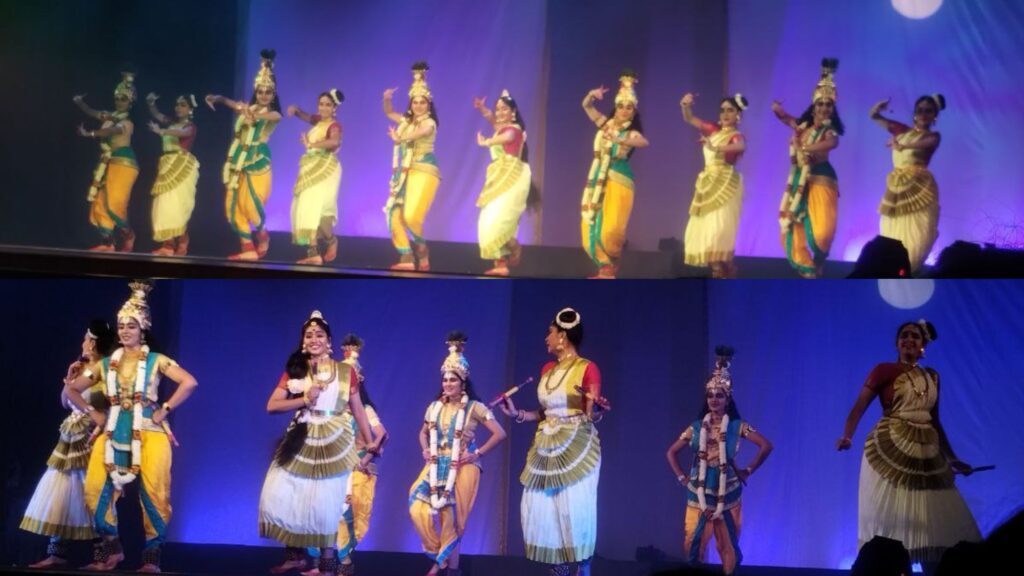
And then, a crescendo of devotion, as the Vishwaroopam moment, aka Bhattathiri’s ‘Agre pashyami’ moment unfolded. Many Krishnas graced the stage, a reminder that the divine is all-pervading in every glance, every breath.
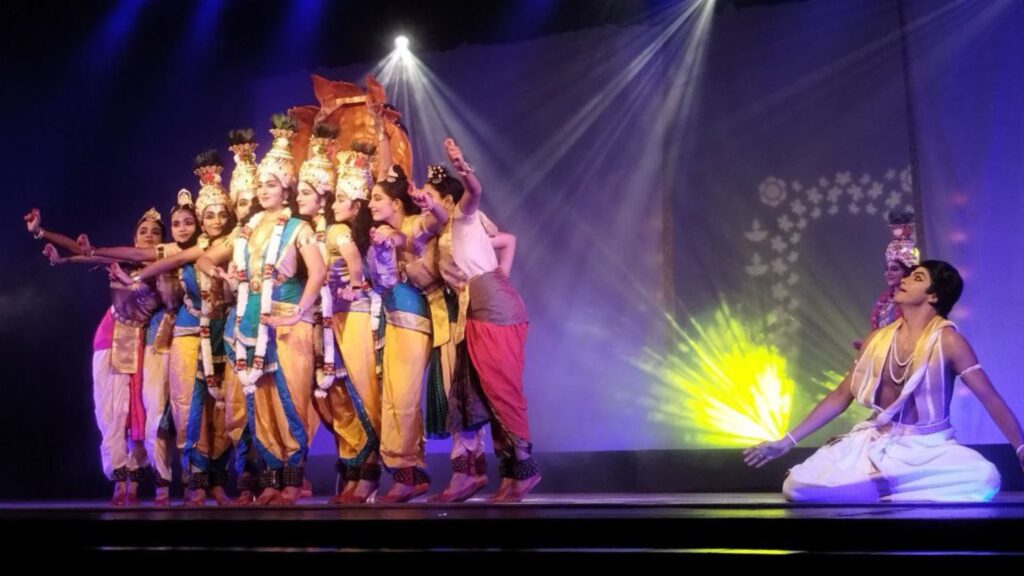
As the tale of the Dashavatharam unfolded, Bhattathiri, too, bore witness (along with the audience) to the divine manifestations of the Lord Himself. The artist portraying Bhattathiri skillfully expressed a range of emotions effortlessly as he played his part convincingly, from tears welling in his eyes to the sheer bliss that overcame him when he gets the Vishwaroopam darshan – the audience saw him as Bhattathiri.
Anita Guha’s finesse, honed by years of dedication, shone through every movement and every expression. Familiar melodies from childhood, like “Karuna cheyvan yendu thamasam Krishna…,” a Malayalam keertanam composed by Irayimman Thampi on Guruvayurappan, flooded the heart with cherished memories.
In toto, the music, composed by Dr. Rajkumar Bharati, wove its charm, carrying the legacy of his freedom fighter, renaissance poet great grandfather, Mahakavi Subramania Bharati, the soundscape, crafted by Sai Shravanam, was nothing short of magic. The singers elevated the experience further.
As the final note hung in the air, the audience in a standing ovation – a wave of gratitude for the artists and the team who had painted the divine on the canvas of our hearts. Special mention must be made of the young volunteers from Desika Daya, who graciously escorted all the guests to their seats. This gesture deserves commendation, especially considering that a significant portion of the audience consisted of senior citizens. Given the seating arrangements at Narada Gana Sabha, their thoughtful initiative was truly praiseworthy.
In the embrace of “Agre Pashyami,” time seemed to stand still, transporting the audience for those two hours to the realm of Mahavishnu himself, where everyone was drenched in a dance of devotion, leaving us all with a yearning to realise the Krishna within.
(Hridya is a freelance writer and blogger based out of Chennai.)
Subscribe to our channels on Telegram and WhatsApp and get the best stories of the day delivered to you personally.




